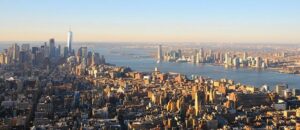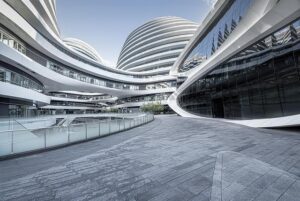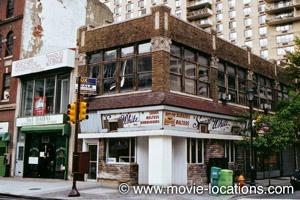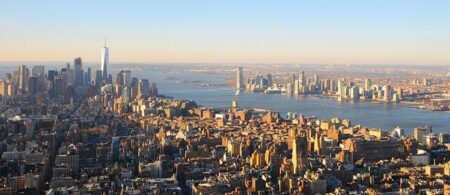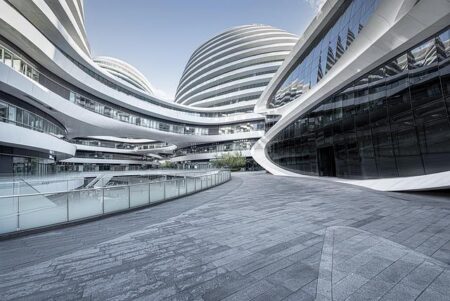Philadelphia’s Cinematic Legacy: A Journey Through Its Most Memorable Film Locations
Philadelphia’s Architectural Gems as Cinematic Backdrops
Philadelphia’s allure for filmmakers stems from its rich architectural heritage and historic significance. The city’s landmarks—such as the Liberty Bell, Independence Hall, and the striking One Liberty Place skyscraper—serve as powerful visual anchors that bring American history to life on screen. Whether it’s the cobblestone pathways of Old City or the colorful murals that adorn South Philadelphia’s walls, these authentic settings enrich narratives by grounding them in a tangible sense of place.
Among these, the Philadelphia Museum of Art’s famous steps have become an emblematic symbol in cinema, immortalized by the “Rocky” franchise. Other prominent sites like City Hall and the Masonic Temple offer filmmakers grandiose and historically resonant environments, enhancing the visual storytelling with cultural depth. These landmarks not only elevate the aesthetic appeal of films but also imbue them with a unique Philadelphia spirit that continues to inspire Hollywood productions.
Philadelphia’s Urban Landscape: A Character in Its Own Right
Beyond its renowned landmarks, Philadelphia‚Äôs diverse neighborhoods and cityscapes provide a rich tapestry that filmmakers skillfully weave into their stories. The city‚Äôs gritty alleys, historic buildings, and dynamic communities create an immersive atmosphere that adds authenticity and emotional weight to films. Titles like “Rocky,” “Silver Linings Playbook,” and “Creed” showcase locations instantly recognizable to locals, yet universally evocative of themes like perseverance, hope, and cultural pride.
Philadelphia’s varied districts cater to a wide range of cinematic genres and narratives, highlighting the city’s blend of tradition and modernity. Key neighborhoods and their typical cinematic roles include:
- Center City: The hub for stories centered on finance, urban life, and corporate drama.
- Fishtown: Known for its artistic vibe, perfect for indie films and character-driven plots.
- University City: A backdrop for academic, medical, and scientific storylines.
- South Philadelphia: The setting for blue-collar tales and community-focused dramas.
| Film | Philadelphia Location | Genre |
|---|---|---|
| Rocky | Philadelphia Museum of Art Steps | Sports Drama |
| Unbreakable | 30th Street Station | Thriller |
| Silver Linings Playbook | South Philadelphia | Romantic Comedy |
| Creed | Franklin Field | Sports |
Top Philadelphia Movie Spots for Fans and Visitors
For cinephiles exploring Philadelphia, the city offers a wealth of iconic film locations that bring Hollywood magic to life. The legendary steps of the Philadelphia Museum of Art, immortalized by Sylvester Stallone’s “Rocky,” remain a must-see. Meanwhile, the bustling urban scenes featured in thrillers like “The Sixth Sense” and “Shooter” highlight the city’s versatility as a filming destination. Visitors should also explore Rittenhouse Square, a charming setting for romantic films, and the authentic markets of South Philly, often depicted in crime and action genres.
Additional notable sites that reveal Philadelphia’s cinematic heritage include:
- Eastern State Penitentiary: A haunting prison location frequently used in psychological thrillers and horror movies.
- Independence Hall: A historic landmark featured in numerous period dramas and documentaries.
- Boathouse Row: Famous for its picturesque nighttime views, ideal for romantic and dramatic scenes.
- Philadelphia’s narrow alleys: Popular settings for suspenseful and noir-style films.
| Location | Film | Memorable Scene |
|---|---|---|
| Rocky Steps | Rocky | Iconic training montage |
| Eastern State Penitentiary | 12 Monkeys | Dystopian prison sequence |
| Race Street Pier | The Sixth Sense | Climactic emotional moment |
| John F. Kennedy Plaza | Silver Linings Playbook | Dance competition finale |
The Economic and Cultural Impact of Philadelphia’s Film Scene
Philadelphia’s film industry plays a vital role in shaping the city’s cultural identity while driving significant economic benefits. By transforming historic neighborhoods and landmarks into authentic film sets, the city not only tells compelling stories but also fosters local pride and attracts tourists eager to experience these cinematic locations firsthand. From the historic charm of Old City’s cobblestone streets to the expansive green spaces of Fairmount Park, each featured site becomes a celebrated part of Philadelphia’s cultural fabric.
On the economic front, the film sector generates millions annually by creating jobs and stimulating business across multiple industries. Local talent, from crew members to actors, find opportunities within productions, while hospitality, construction, and retail sectors benefit from increased demand. The following table outlines key areas positively influenced by Philadelphia’s film activities:
| Industry | Effect |
|---|---|
| Hospitality | Surge in hotel stays and restaurant patronage from film crews and tourists |
| Employment | Job creation for production staff, actors, and support personnel |
| Retail | Increased sales in costume shops, equipment rentals, and souvenir outlets |
| Real Estate | Appreciation of property values near popular filming locations |
Final Thoughts: Philadelphia’s Enduring Role in Film
Philadelphia’s blend of historic landmarks and vibrant neighborhoods continues to captivate filmmakers and audiences alike, securing its place as a cinematic treasure. The city’s diverse settings—from gritty urban streets to iconic cultural sites—offer storytellers a rich palette to craft compelling narratives. As demonstrated by these 25 notable films, Philadelphia’s distinctive character and scenic environments remain a powerful muse, inviting viewers on a memorable journey through the City of Brotherly Love that extends far beyond the closing credits.



